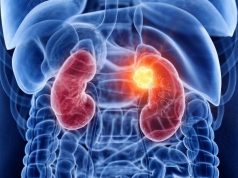Addition of network of 18 mortality risk assessment genes related to TP53 improves PERSEVERE
WEDNESDAY, Aug. 23, 2017 (HealthDay News) — Addition of previously unconsidered genes from the Pediatric Sepsis Biomarker Risk Model (PERSEVERE) can improve mortality risk stratification for children with septic shock, according to a study published in the Aug. 15 issue of the American Journal of Respiratory and Critical Care Medicine.
Hector R. Wong, M.D., from the Cincinnati Children’s Hospital Medical Center, and colleagues examined whether the 68 previously unconsidered genes can improve performance of PERSEVERE. By determining the biological linkage of the 68 genes, the authors reduced the number of variables; the genes identified through variable reduction were combined with the PERSEVERE-based mortality probability to derive a risk stratification model for 307 patients. The derived tree (PERSEVERE-XP) was evaluated in a separate cohort of 77 individuals.
The researchers identified a network of 18 mortality risk assessment genes related to tumor protein 53 (TP53) in variable reduction. PERSEVERE-XP had an area under the receiver operating characteristic curve (AUC) of 0.90 (95 percent confidence interval, 0.85 to 0.95) for differentiating between survivors and non-survivors in the derivation cohort. The AUC was 0.96 (95 percent confidence interval, 0.91 to 1.0) in the test cohort. The AUC was superior for PERSEVERE-XP versus PERSEVERE.
“PERSEVERE-XP combines protein and mRNA biomarkers to provide mortality risk stratification with possible clinical utility,” the authors write. “PERSEVERE-XP significantly improves on PERSEVERE and suggests a role for TP53-related cellular division, repair, and metabolism in the pathophysiology of septic shock.”
Abstract
Full Text (subscription or payment may be required)
Copyright © 2017 HealthDay. All rights reserved.








